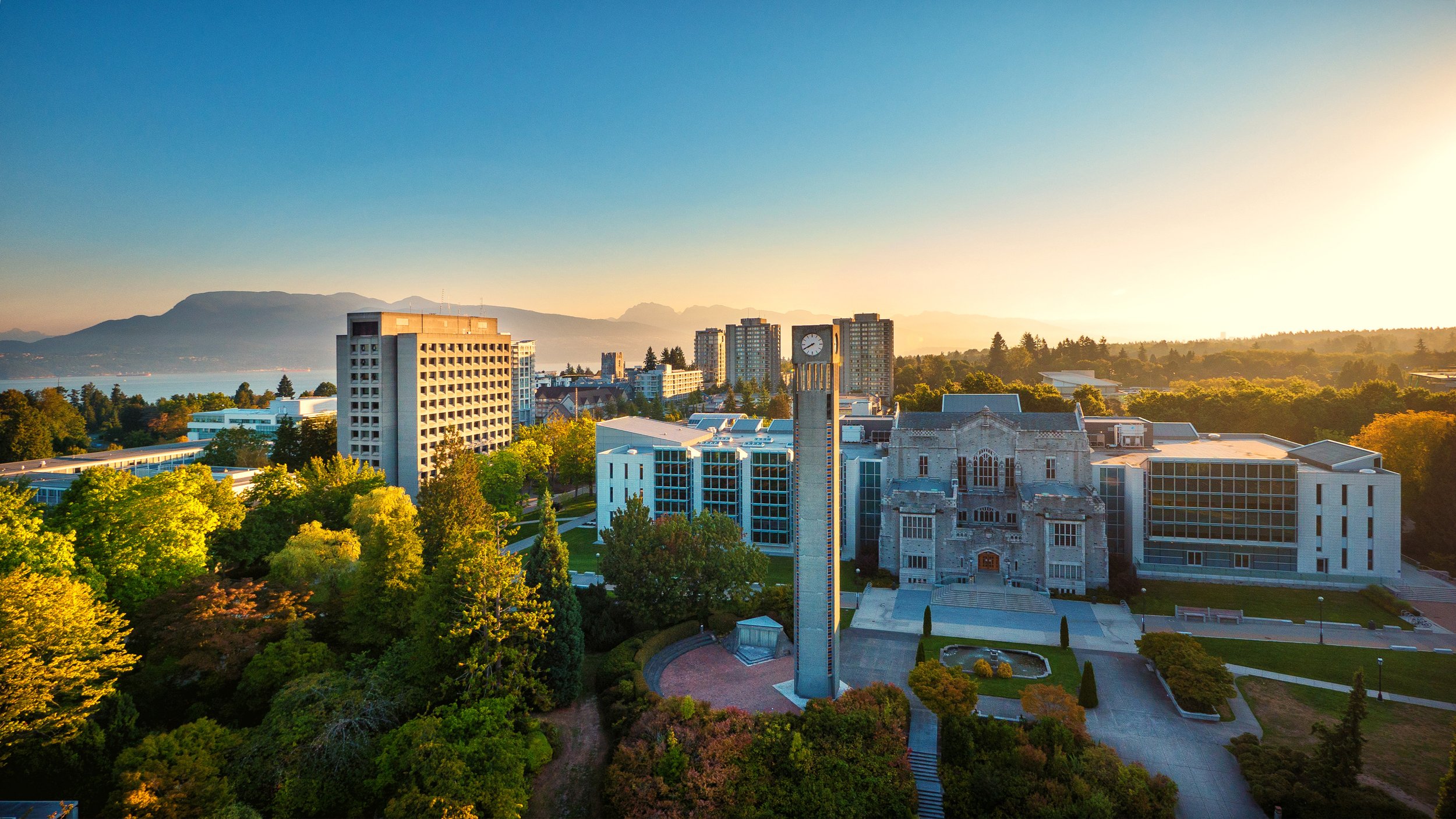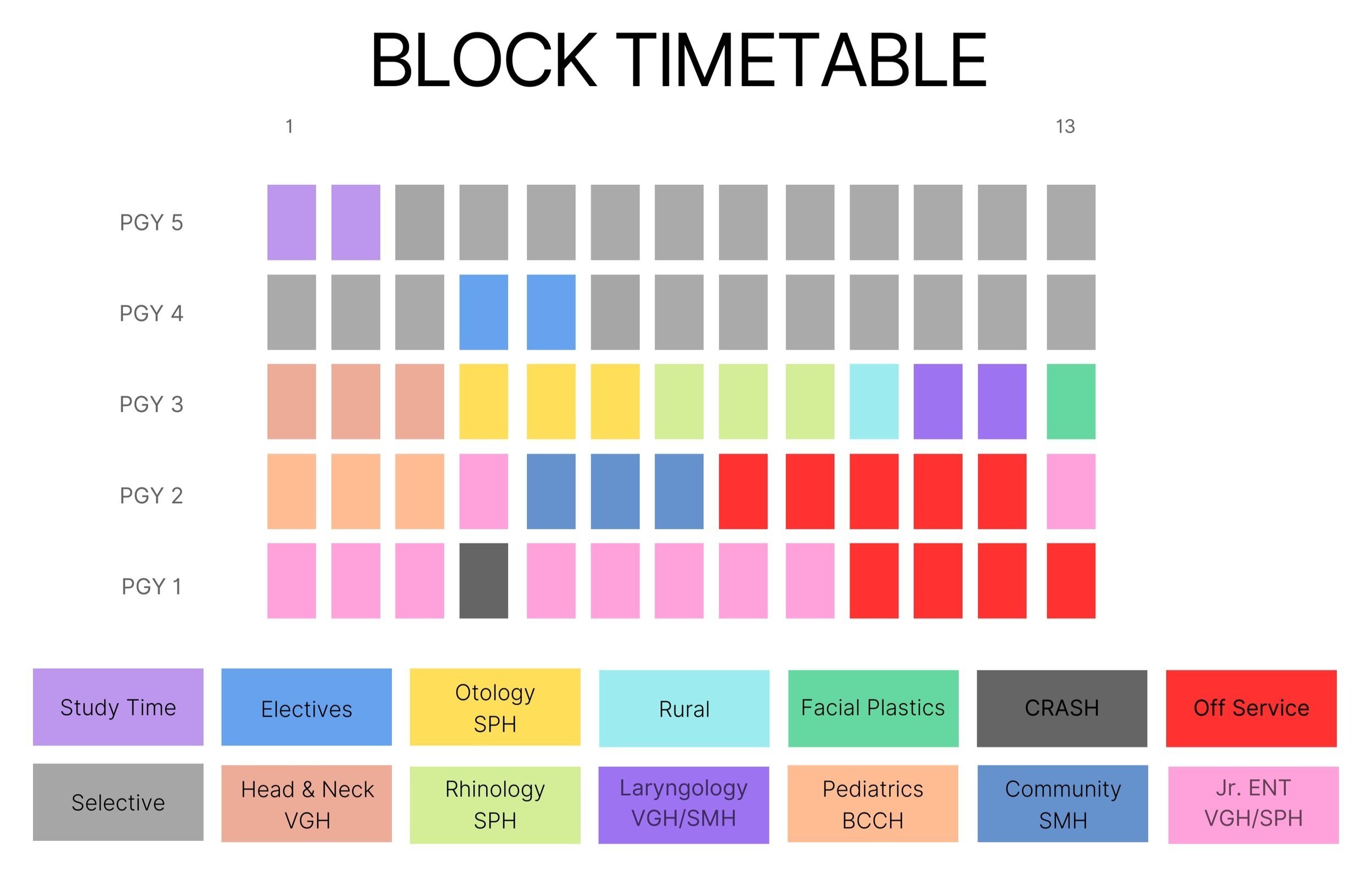
Curriculum
How we provide our residents with a comprehensive training experience
Rotation Roadmap
A working rotation roadmap for the five year OHNS program at the University of British Columbia. Learn more below.
-
The PGY-1 year is structured as follows:
Six to seven 4-week blocks (rotations) on the Otolaryngology service
Four to five off-service speciality rotations. One block each on Anesthesia, Trauma Surgery, Pediatric ER, General Surgery Oncology, Peri-operative Internal Medicine
1 block of surgical CRASH (Competencies in Resuscitation and Stabilization of Hospital Patients).
During the Otolaryngology rotation, residents are taught the skills to perform complete head and neck examination including indirect laryngoscopy, rigid nasal endoscopy, fiberoptic laryngoscopy, microscopic otoscopy and pneumatic otoscopy. The non-otolaryngology rotations are designed to enhance the basic knowledge of the otolaryngologist-in-training.
Residents attend a series of Core Surgery seminars, which, in addition to the rotations described above, are intended to prepare residents for the Foundations of Surgery examination. A one month CRASH program for all surgical residents also takes place that reviews Surgical Competencies in Resuscitation and Stabilization of Hospital Patients. This program is unique to UBC.
-
The PGY-2 year is structured as follows:
Eight blocks on the Otolaryngology service. Includes 3 blocks as the only resident at BC Children’s Hospital & 3 blocks as the only resident at Surrey Memorial Hospital.
Five blocks of off-service. One block each on Plastic Surgery, Neurosurgery, Adult ER, Surgical Dermatology (MOHS) and ICU
In the PGY-2 year residents spend three consecutive blocks each at BC Children’s Hospital and Surrey Memorial Hospital. As the only residents at each respective site residents are able to develop foundational operative skills during the PGY-2 year
-
PGY-3 through PGY-5 are undertaken in preceptor based blocks of subspecialty areas and includes; paediatric otolaryngology, otology, neuro-otology, rhinology, sinonasal surgery, laryngology, head and neck oncology with microvascular reconstruction and facial plastic and reconstructive surgery.
Residents are given ample opportunities to schedule community rotations every year from PGY-3 onwards. Residents have multiple community sites to select from.
In the final year of residency, rotations are selected depending on what the resident will be doing after graduation. Ie. General otolaryngology or sub-specialty fellowship training.
-
Call requirements are in accordance with the Resident Doctors of British Columbia Collective Bargaining Agreement;
https://residentdoctorsbc.ca/wp-content/uploads/2021/02/2019-2022-RDBC-Collective-Agreement-FINAL.pdfResidents cover three sites during residency; Vancouver General Hospital, St. Paul’s Hospital and BC Children’s Hospital. Residents take home call.
Junior residents (PGY-1 & PGY-2) take “buddy call” with a senior resident (PGY-4 & PGY-5). PGY-3 residents take solo call.

